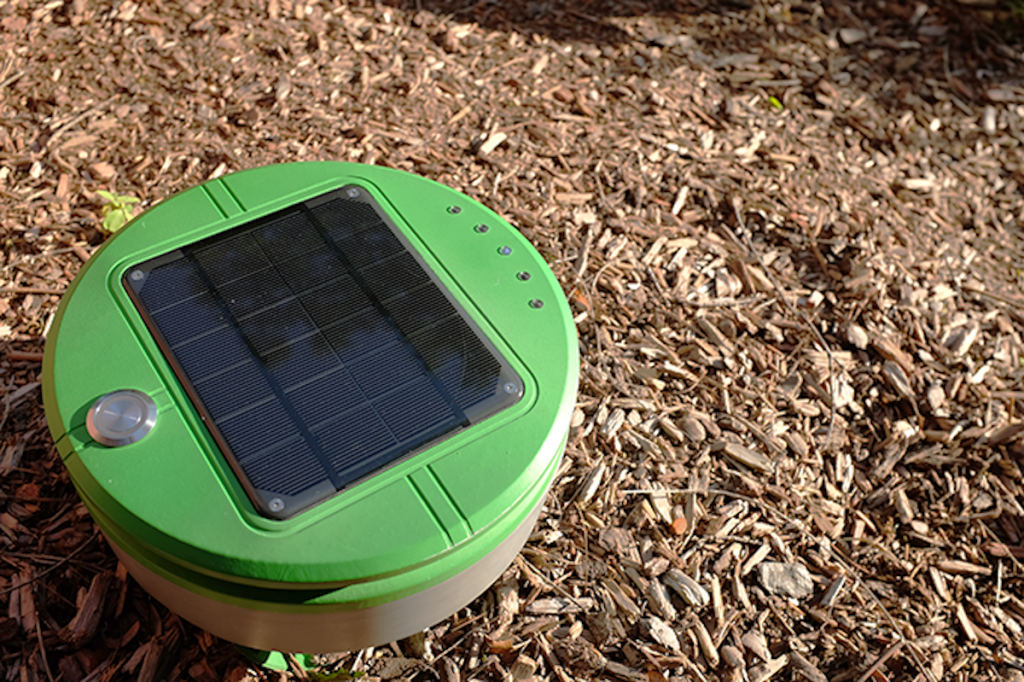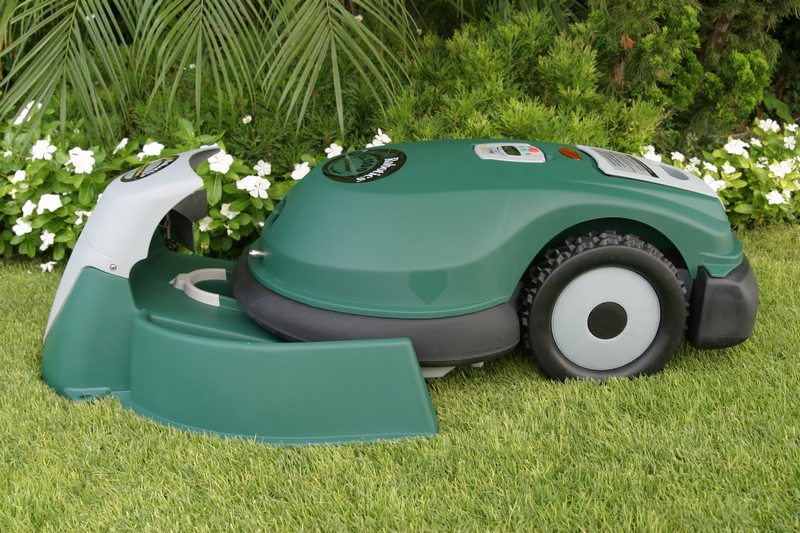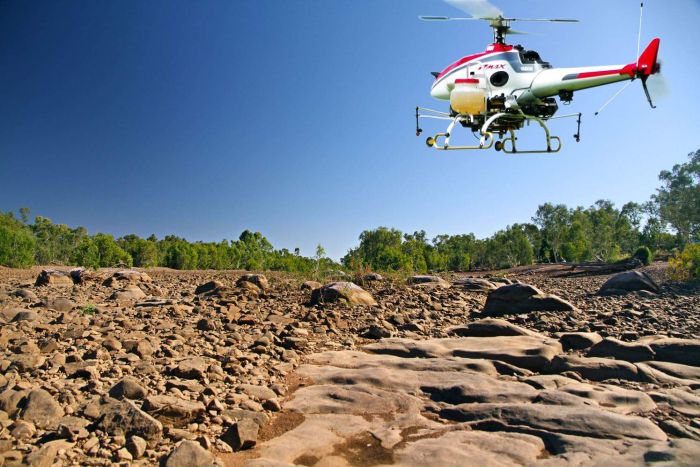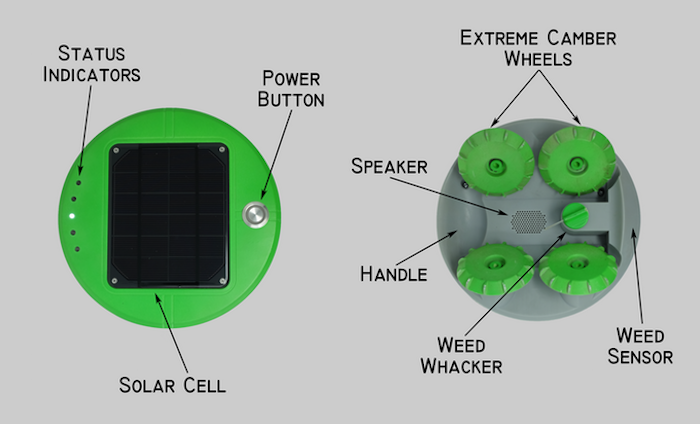Last Updated on July 30, 2024 by teamobn

Meet Tertill – he’s your new best friend. The robot weeder can weed and scare garden pests away. He’ll do it day after day, month after month without pay. And you don’t even have to feed him ‘coz he’s solar powered!
How good can it get? All you need to do now is get Tertill talking with your robotic lawn mower, home vacuum cleaner and your automatic pool cleaner and you can sit back and relax. Just set and forget!

Automated weed killers have been hot property for at least the last five years. But so far, the technology has been all around drones that are able to recognize larger noxious weeds such as prickly acacia. Such drones have been in use here in Australia since 2013.

Saving Our Crocodiles With Robot Weeder
What say! Indeed… in the Kimberley region of North-Western Australia there is an extremely invasive introduced weed called stinking passionflower. It’s so dense it’s stopping crocodiles from being able to nest. State-of-the-art LiDAR drones are being used to survey the extent of the weed for further analysis!
Our new mate, Tertill, is the first ‘domesticated’ robotic weed killer we’re aware of. He’s compact. Dimensions are only 8.25 x 8.25 x 4.75 in (210 x 210 x 121 mm) while only weighing 2.5 lbs (1.1 kg). He’s fitted with a Bluetooth Low Energy (BLE) chip, a solar panel on top and a Li-Ion rechargeable battery. He’s even got a USB port for backup charging. And he’s got that all important 4×4 drive to keep him from getting stuck in soft soil, sand or mulch.

That extreme camber on those wheels is the result of exhaustive testing. It keeps Tertill going up hill and down dale, rain, hail or shine… power permitting 🙂
The downside is that Tertill can only manage about 100 square feet (9m2) by himself. If your garden is bigger you’ll need another Tertill. The upside is that your Tertills will communicate with each other so that they don’t cover the same ground twice!
Tertill’s developer is the same genius who invented Roomba, the first commercialized robotic vacuum cleaner so he’s got the right genes.
While I love the concept, I’ll be waiting for Tertill’s big brother. I’ve got about an acre of gardens here and even my vege patch would need a small Tertill army. So until Arnietill arrives, I’d better get back to the weeding 🙂
If you want to know more about this project, visit Franklin Robotics…
Advancements in Weed Recognition Technology:
Advancements in weed recognition technology are pivotal for the development of gardening tools like the robot weeder. These technological improvements have made it possible for devices to differentiate between desirable plants and unwanted vegetation with remarkable accuracy. As we delve deeper into this topic, we’ll explore how innovations in artificial intelligence and sensor technology have revolutionized the way gardens are maintained.
Sophisticated Sensing Capabilities
The heart of any robot weeder lies in its ability to accurately identify weeds. This is primarily achieved through advanced sensors that analyze the physical characteristics of plants. These sensors are equipped with cameras and sometimes infrared technology, allowing the robot weeder to scan its surroundings meticulously. The data collected is then processed using complex algorithms to distinguish weeds from other plants based on size, shape, and color variations. This level of precision ensures that the robot weeder performs its tasks effectively without harming the surrounding flora.
Integration of Artificial Intelligence
Artificial intelligence (AI) plays a crucial role in enhancing the functionality of a robot weeder. AI algorithms are trained on vast datasets of plant images, learning to recognize a wide variety of weed species under different conditions. This training includes variations in lighting, plant maturity, and even partial obstructions. As the robot weeder encounters new situations, it continuously learns and adapts, improving its accuracy over time. This adaptive capability is essential for handling the diverse environments found in different gardens.
Real-Time Data Processing
For a robot weeder to act swiftly, it must process information in real time. This is where edge computing comes into play, allowing data processing to occur directly on the device rather than relying on cloud services. This reduces latency and enhances the robot weeder’s response times, enabling immediate weed removal once identified. Real-time processing is critical in dynamic garden environments where growth and changes occur constantly.
Enhanced Navigation Systems
The effectiveness of a robot weeder also depends on its ability to navigate through the garden’s terrain. Advanced navigation systems use a combination of GPS and local mapping technologies to guide the robot weeder safely around the garden. This ensures that the robot does not trample over plants and can navigate back to specific areas that require further attention. Such systems are integral to the autonomous operation of the robot weeder, allowing it to perform its duties with minimal human intervention.
Future Prospects in Weed Recognition
Looking forward, the potential for further advancements in weed recognition technology is immense. Researchers are exploring the use of hyperspectral imaging techniques that could allow a robot weeder to detect chemical signatures unique to specific weed species. This could drastically improve weed identification accuracy, making the robot weeder even more efficient. Additionally, developments in machine learning could enable weeders to handle an even broader range of environmental variables and plant species, solidifying their role as essential tools for modern gardening.
These advancements in weed recognition technology not only enhance the functionality of the robot weeder but also promise a future where garden maintenance is less labor-intensive and more environmentally friendly. As this technology continues to evolve, the robot weeder is set to become an even more invaluable tool for gardeners worldwide.
Comparison with Traditional Weeding Methods
Exploring various weeding methods reveals a clear evolution from manual labor to sophisticated automation. Among these, the robot weeder stands out as a modern solution designed to reduce the physical strain and environmental impact associated with traditional weeding. This section compares traditional weeding methods with the advanced capabilities of the robot weeder, highlighting how technology is transforming garden maintenance.
Manual Weeding: Labor-Intensive and Time-Consuming
Manual weeding, the most traditional method, involves physically removing weeds by hand or with tools like hoes and trowels. This approach gives gardeners precise control over weed removal, ensuring that only the unwanted plants are eliminated without damaging surrounding vegetation. However, manual weeding is labor-intensive and can be extremely time-consuming, especially for large gardens. It requires significant physical effort, which can be strenuous and uncomfortable, leading to potential back and joint pain.
Chemical Weed Control: Quick but Environmentally Concerning
Chemical herbicides offer a faster, albeit less selective, alternative to manual weeding. These chemicals can effectively kill weeds over large areas with minimal labor. However, their use raises significant environmental concerns. Herbicides can contaminate soil, water, and non-target plants, potentially causing harm to local ecosystems and wildlife. Moreover, the overuse of chemical weed control can lead to herbicide resistance, making it increasingly difficult to manage weeds over time.
Robot Weeder: Efficient and Eco-Friendly
The robot weeder represents a leap forward in weeding technology. Designed to operate autonomously, it uses advanced sensors and artificial intelligence to distinguish weeds from valuable plants. This allows the robot weeder to target and remove weeds accurately without the need for chemical interventions or laborious manual efforts. Here’s how it compares with traditional methods:
- Precision and Selectivity: Unlike broad-spectrum herbicides, the robot weeder can precisely target weeds, reducing the chance of harming nearby plants. This precision mirrors the selectivity of manual weeding but without the associated physical strain.
- Sustainability: The robot weeder operates on solar power and does not require harmful chemicals, making it an environmentally friendly option. This sustainable approach helps maintain soil health and biodiversity, unlike chemical methods that can degrade soil quality and biodiversity.
- Consistency and Endurance: Capable of operating under various weather conditions and at any time of day, the robot weeder provides consistent care that is hard to achieve with manual weeding. Its endurance and autonomous nature allow it to maintain large areas without fatigue, a significant advantage over human labor.
- Long-term Cost Efficiency: While the initial investment in a robot weeder may be higher than the cost of manual tools or chemical herbicides, the long-term savings on labor and chemical purchases can be substantial. Additionally, the reduction in physical strain and potential health costs associated with manual weeding cannot be overlooked.
Looking Ahead
As gardening technology continues to evolve, the role of devices like the robot weeder becomes increasingly significant alongside natural weed killers. By offering a blend of efficiency, environmental friendliness, and cost-effectiveness, robotic weeders could soon become the preferred method for garden maintenance, signaling a shift away from more traditional, labor-intensive practices. This transition not only promises a future of smarter gardening but also aligns with broader environmental goals, making the robot weeder a key player in sustainable horticulture.








